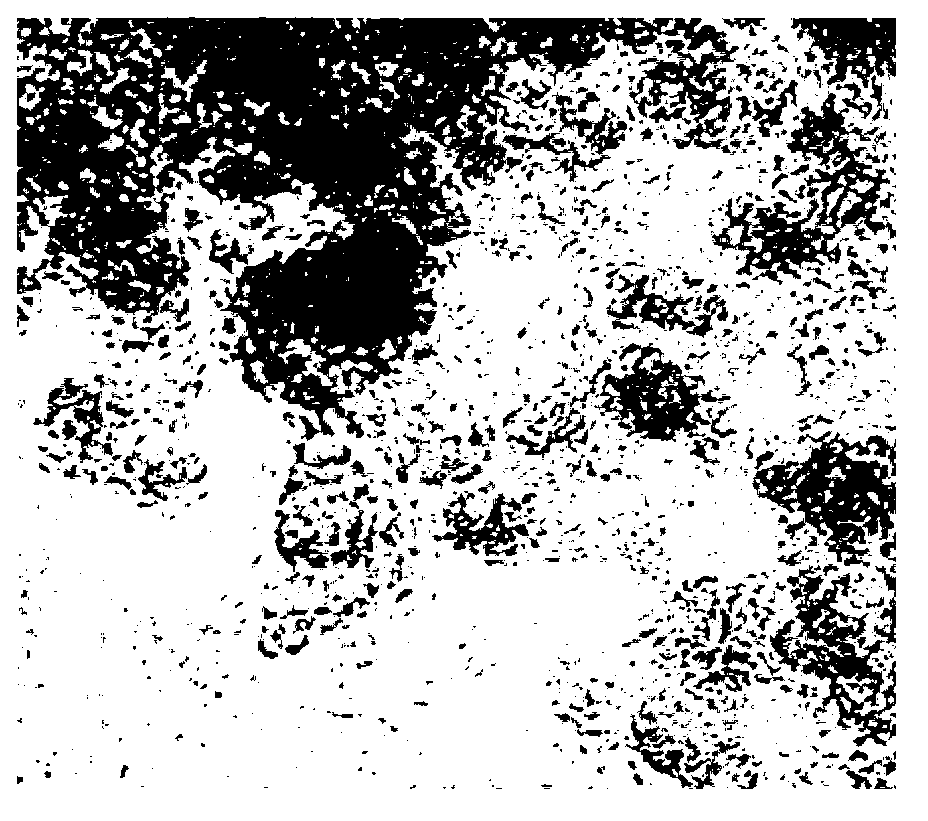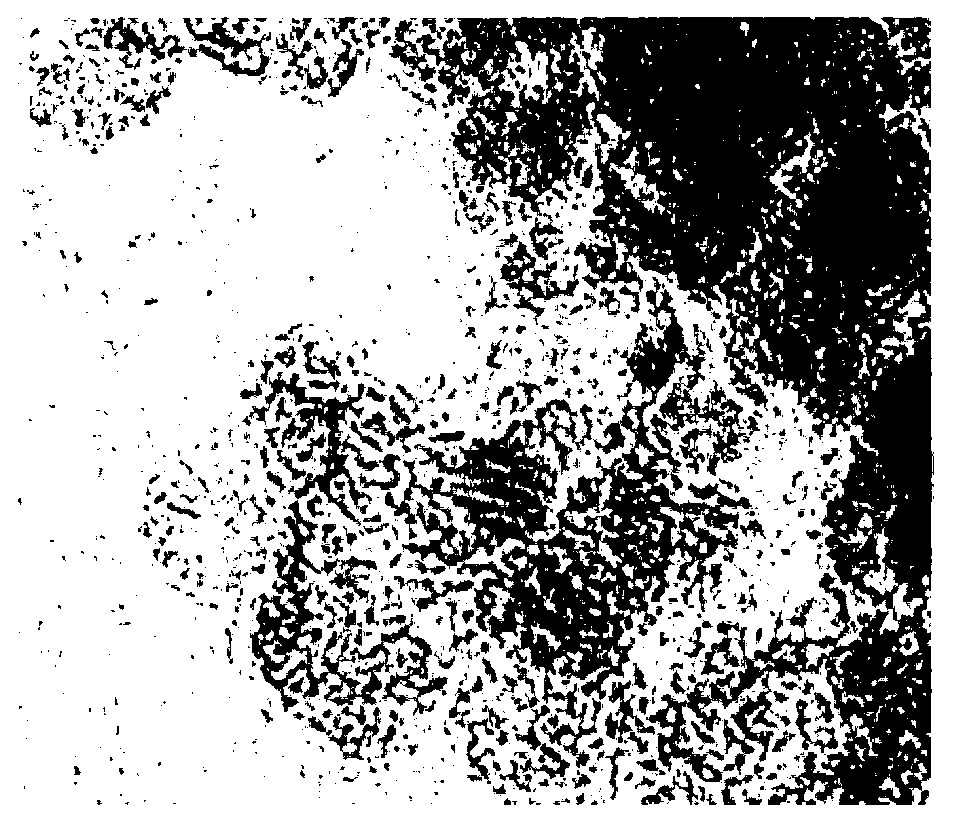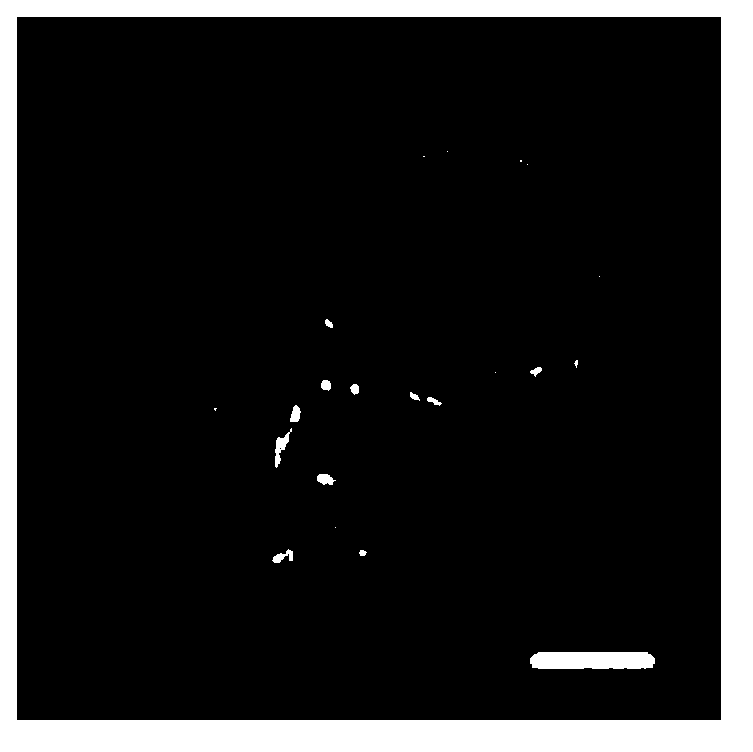Preparation method and application of carbon nanomaterial-immunostimulatory sequence compound
A technology of immunostimulatory sequences and carbon nanomaterials, applied in the biological field, can solve the problems of low cell uptake rate of immune stimulatory sequences, achieve good medical application prospects, save costs, and reduce pain
- Summary
- Abstract
- Description
- Claims
- Application Information
AI Technical Summary
Problems solved by technology
Method used
Image
Examples
Embodiment 1
[0036] Embodiment 1 synthetic immunostimulatory sequence
[0037] All immunostimulatory sequence nucleotides were synthesized by Invitrogen, in which ssCpG is a single-stranded CpG oligodeoxynucleotide, nonCpG is an oligonucleotide without a CpG motif, and Cy3-CpG is a red fluorescently labeled oligonucleotide Nucleotides, S-CpG is an oligonucleotide containing a phosphorothioate backbone, all oligonucleotides have a phosphodiester bond backbone, and the sequences of the oligonucleotides are shown in Table 1 and sequence respectively. Shown in the list as SEQ ID NO: 1 to SEQ ID NO: 4.
[0038] The immunostimulatory sequence involved in the embodiment of table 1
[0039]
Embodiment 2
[0040] Example 2 Preparation of Nanodiamond Immune Sequence Complex (NDs-CpG Complex)
[0041] Polylysine modified nanodiamonds (see L.C. L. Huang and H. C. Chang. Adsorption and Immobilization of Cytochrome c on Nanodiamonds. Langmuir2004, 20, 5879-5884 for details).
[0042] Mix 70mg of nano-diamonds (NDs) (Gansu Jinshi Nano Materials Co., Ltd., the nano-diamonds have a purity of >99% and a single particle diameter of about 2-10nm, forming a cluster structure of about 250nm in the solution) and 30mg of poly Add polylysine (PDL) (sigma, product number: P7280) to 10 mL of boric acid, adjust the pH to 8.5 with 1M NaOH, mix well by ultrasonic, shake on a shaker at 25oC overnight, centrifuge at 13000rpm for 20min, and wash the obtained precipitate with millipore pure water for 5 After several times, the free PDL was completely removed, and the PDL-modified NDs (NDs-PDL) were obtained by centrifugation.
[0043] NDs-PDL and single-chain CpG (ssCpG) were mixed in millipore pure wa...
Embodiment 3
[0044] Example 3 Observation of Cellular Uptake Behavior of NDs-CpG
[0045] The Cy3-CpG (Cy3 exhibits red fluorescence) oligonucleotide synthesized in Example 1 was adsorbed to the NDs-PDL prepared in Example 2, and the preparation method was the same as in Example 2 to prepare fluorescently labeled NDs-CpG.
[0046] Raw264.7 cells were purchased from the Shanghai Cell Bank of the Chinese Academy of Sciences and cultured in DMEM medium (Gibco) containing 10% fetal bovine serum. 37°C, 5% CO 2 , cultured in saturated humidity. Cells at 5 x 10 4 / well density inoculated on laser confocal culture dish, adhered to the wall overnight. Set up the following experimental groups: blank control, ssCpG (5 μg / mL), NDs-PDL (50 μg / mL), NDs-CpG (50 μg / mL), incubate at 37°C for 6 h, wash with PBS, image with Leica TCS sp5 confocal fluorescence microscope (excitation wavelength 561nm, emission wavelength 620nm), 20-25 cells were randomly selected in each group, and the average fluorescence...
PUM
| Property | Measurement | Unit |
|---|---|---|
| Diameter | aaaaa | aaaaa |
| The average particle size | aaaaa | aaaaa |
Abstract
Description
Claims
Application Information
 Login to View More
Login to View More - R&D
- Intellectual Property
- Life Sciences
- Materials
- Tech Scout
- Unparalleled Data Quality
- Higher Quality Content
- 60% Fewer Hallucinations
Browse by: Latest US Patents, China's latest patents, Technical Efficacy Thesaurus, Application Domain, Technology Topic, Popular Technical Reports.
© 2025 PatSnap. All rights reserved.Legal|Privacy policy|Modern Slavery Act Transparency Statement|Sitemap|About US| Contact US: help@patsnap.com



